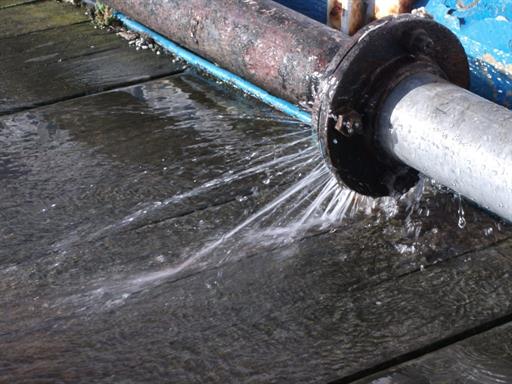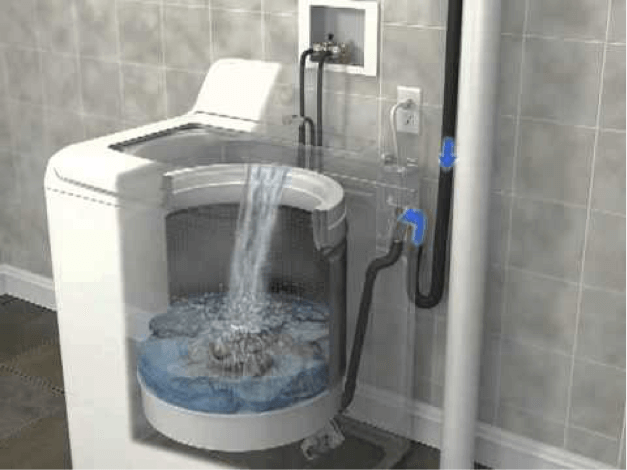Detecting and Quickly Repairing a Burst Pipe: Essential Steps
Detecting and Quickly Repairing a Burst Pipe: Essential Steps
Blog Article
What're your beliefs on How to Prepare for Your Dishwasher Installation?

A ruptured pipe is a major emergency; you can just stand as you watch water you pay very much to reunite with the earth. In even worse instances, you see a swimming pool on your cooking area floor, which is an excellent journey risk, particularly if you have children around. If the pipeline that ruptured was in your wall surfaces, problem: you may require to repaint that entire area.
How can a calamity like a ruptured pipe be protected against as well as managed? Well, by paying attention to your professional emergency plumbers and also following these regulations.
How do I understand when my pipelines have burst?
Rising and fall water pressures
Pipes do not just burst in a day. You might have observed that your kitchen tap or shower doesn't run immediately when you transform the tap. It may pause for a couple of seconds and then blast you with even more force than typical.
In various other circumstances, the water may appear typical at first, then decrease in stress after a couple of seconds.
Damp walls and also water spots
Prior to a pipeline ruptureds, it will leak, a lot of times. If this relentless dripping goes unnoticed, the leak might finish into a broad laceration in your pipe. One very easy means to avoid this emergency is to look out for damp walls ad water discolorations. These water spots will lead you right to the leakage.
Puddles under pipes and also sinks
When a pipe bursts, the discharge forms a pool. It may show up that the puddle is growing in dimension, and also despite how many times you mop the pool, in a couple of minutes, there's one more one waiting to be cleaned up. Frequently, you may not be able to trace the puddle to any noticeable pipes. This is an indication to call an expert plumber.
Untraceable dripping sounds
Pipeline bursts can happen in one of the most unpleasant places, like within concrete, inside walls, or under sinks. When your home goes quiet, you might have the ability to hear an aggravatingly relentless trickling noise. Also after you have actually inspected your shower head and kitchen faucet, the dripping may continue.
Dear reader, the trickling might be coming from a pipeline inside your wall surfaces. There isn't much you can do about that, other than inform an expert plumber.
Shut off the Water
When water ices up, it expands in quantity by about 9 percent. And also it broadens with tremendous pressure: The pressure inside pipelines might go from 40 pounds per square inch to 40,000 psi! No pipeline can hold that much pressure, so it breaks open. The break might take place where the ice kinds, however more often, it happens where water stress finds a weak point in the pipe. That might be inches or perhaps feet from the frozen area. Discover the water shutoff valve and turn off the water to stop more damage. You may also need to shut off the electricity also, depending upon where the leaks takes place as well as exactly how large it is.
Polluted water
Many people think a ruptured pipeline is a one-way electrical outlet. Fairly the contrary. As water flows out of the hole or gash in your plumbing system, pollutants locate their way in.
Your water might be infected from the resource, so if you can, examine if your water tank has any issues. Nevertheless, if your drinking water is supplied and purified by the city government, you should call your plumber promptly if you see or scent anything funny in your water.
What do I do when I spot a ruptured pipeline?
Your water meter will remain to run even while your water wastes. To minimize your losses, locate the major controls as well as transform the supply off. The water pipe are an above-ground framework beside your residential property.
How to Fix & Detect a Leaking Pipe
How Do I Know if a Pipe is Leaking?
Leak detection tests can help you determine if your pipe has a leak. Even if you don’t see an apparent leak, you should still conduct leak detection tests regularly to save water and money—and prevent major damage to your home.
Water meter. It can be helpful to figure out what your usual water meter usage numbers are and then monitor them regularly. To monitor your meter, first, turn off all water faucets in your home. Check the meter and write down the numbers. In a few hours, check the meter again. If the numbers have changed, you have a leak. Water gauge. Use a water gauge to test your water pressure. Your showerhead should produce a certain amount of water pressure based on its model and design. If the pressure is lower than it is supposed to be for that specific showerhead, your home likely has a leak. Puddles. Look inside your bathroom, laundry, and kitchen sink cabinets. Puddles around the cabinets or around toilets, tubs, showers, and washing machines indicate the presence of a leaking pipe. You may also notice loose tiles, peeling or flaking paint, or mold caused by water accumulation. Napkin test. Even if you don’t see any puddles, you may still have a leak. You can test for water leaks in the bathroom, laundry, and kitchen by wiping below-sink connections with a napkin, paper towel, or piece of toilet paper. If it becomes damp, you probably have a leaking pipe under the sink. Discolored walls. Walls that are discolored—usually with brown or yellow stains—or bulging might mean that they have been impacted by water damage caused by a leaking pipe. Smell. A leaky pipe will create sitting water, and over time, that water may develop a musty smell. If your home smells musty, but you can’t locate the source, it may be due to a leak. Steps for Fixing a Leaking Pipe
A leaky drain can be remedied by tightening the pipe base, replacing the drain seal, caulking the rim, and tightening the pipe nut. Similarly, a leaking toilet pipe can be treated by tightening the packing nut. You may also need to replace the valve. A leaky faucet may just need tightening or replacement of the washers. If that doesn’t work, consider replacing your faucet. If your pipe has a hole in it, you may want to use a pipe leak sealer or pipe leak tape. This quick fix for water pipe leaks can also temporarily fix a copper pipe leak. https://www.ahs.com/home-matters/quick-tips/how-to-tell-if-pipes-are-leaking/

I was made aware of that article about How to Install and Connect a New Dishwasher from a friend on another web property. Sharing is good. Helping people is fun. We treasure reading our article about How to Prepare for Your Dishwasher Installation.
Plumbing crisis? Reach out! Report this page